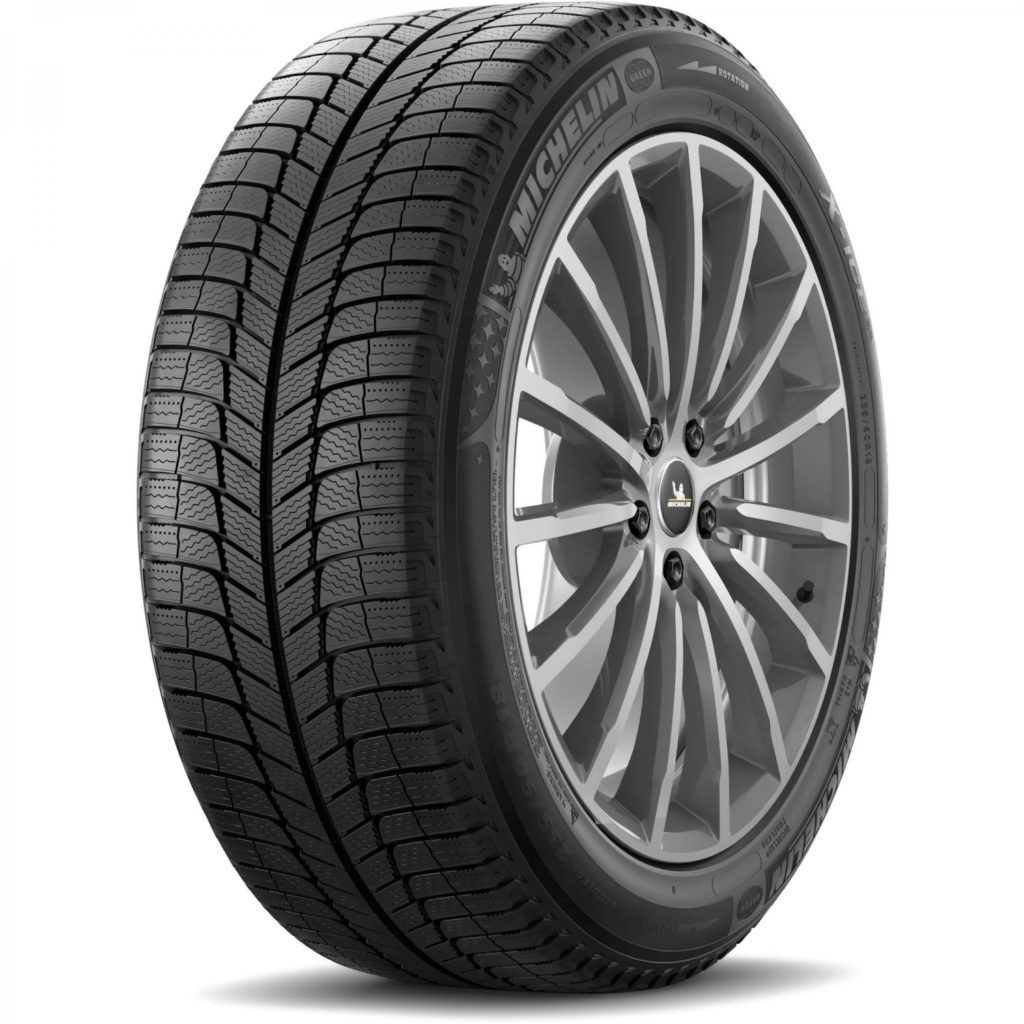Rating of the best winter tires R15 for 2022

Almost every manufacturer of winter tires for any brand of car produces a wide range of different sizes, which helps the car owner to easily choose the right option for his "iron horse". However, statistics show that R15 is considered the most popular diameter. These tires are intended, to a greater extent, for passenger models, but can also be installed on some crossovers, which are transitional types between cars and SUVs.

Content [Hide]
- 1 Popular types of winter tires R15
- 2 Popular tread patterns for R15 winter tires
- 3 Choosing the best brand for R15 winter tires
- 4 Importance of the R15 Winter Tire Release Date
- 5 Run-in mode for winter tires R15
- 6 Service life of winter tires
- 7 Rating of the best winter tires R15 for 2022
- 8 Summing up
Popular types of winter tires R15
All tires under consideration can be quite specifically divided into three types, each of which will be suitable for certain climatic and road conditions.
European winter tires
This type of tire was developed for use in "mild winter" conditions, which means:
- The presence of frequent thaws;
- Light and short frosts;
- Falling not so much snow.
In such conditions, the car will have to be driven, often on wet asphalt, rather than on a really slippery surface. From this it is clear that "European" tires will grip better on hard surfaces, especially at higher speeds. In addition, they are able to easily remove fluid from the contact area of the road with the wheel and do not produce excessive noise. However, if the trip is supposed to be on a heavily snowy road, then the driver must apply maximum caution and driving skill, because the car will slip and weakly obey the steering. In this case, even small snowdrifts can be impassable for European tires.Thus, the tires in question are perfect for winter time when used in large cities in a temperate climate. An additional option that affects their reliable operation will be the systematic cleaning of streets from ice and sprinkling roads with anti-icing reagents.
Scandinavian winter tires
These models are designed for more severe operating conditions, in regions where winter temperatures often fall below 0 degrees, roads suffer from constant icing, and snow is everywhere. The grip of the "Scandinavians" on slippery surfaces is significantly higher than that of the "Europeans", this is especially clearly seen when driving on snow, both loose and rolled. The reason for good adhesion lies in the softness of the tread, which really sticks to the coating, preventing slippage and clinging to every roughness. Hence the second name of these tires - "Velcro". Nevertheless, a soft tread can also have a number of disadvantages, one of which can be called a reduced responsiveness to control on hard surfaces, which occurs due to the general compliance of the rubber. On dry pavement, Scandinavian tires slow down worse and respond poorly to steering wheel turns. In addition, these tires wear out very quickly, especially at positive temperatures (at positive temperatures, the rubber simply becomes even softer). From this we can conclude that Scandinavian models will perform better in the northern regions of the Russian Federation or in Siberia, because they are adapted for severe frosts, and dry asphalt in these regions of the country is almost never found in winter.
Studded tires
This type is the most radical version of winter tires.Metal spikes are integrated into their protectors, which protrude by 1-1.5 millimeters. With their sharp ends, they directly rest against the icy surface and are able to cling to small roughness, which allows you to keep the car on ice even better than Velcro does. This is especially well felt at low negative temperatures, when the ice is relatively soft. With a decrease in temperature, the quality of adhesion of studs decreases, because their studs do not “bite” so tightly into hardened ice. In addition, studded models will need to strengthen the entire tread, making it stiffer so that it can properly hold the steel studs. However, this is more about increasing the degree of flotation on loose snow.
The disadvantages of studded models include their complete uselessness when driving on dry asphalt. They adhere extremely poorly to the hard surface, while at the same time lowering the grip with the rubber in the wheel area; wear out very quickly despite the carbide tips. From this it is clear that on a dry and hard surface, a car on studded tires will significantly increase the braking distance, and this indicates an extremely poor handling of the car. Also, the spikes themselves during sharp maneuvers easily fly out of the tread. And finally, studded models are the loudest among all winter tires.
IMPORTANT! Recently, manufacturers of studded tires have tried to make them universal. So, today there are models that, when driving on a hard and dry surface, simply allow the studs, as it were, to “drown” in the tread, which avoids damage to them, while improving handling and shortening the braking distance.At the same time, experiments are underway with the shape of the spikes, their number and placement.
As a result, studded tires will perfectly cope with the winter conditions inherent in central Russia, where ice is common in the last months of the year. It is worth noting that these models are not well suited for winter travel in some European countries - in some European countries they are simply prohibited for use at any time.
Popular tread patterns for R15 winter tires
Especially for winter tires R15, several popular types of tread were created, each of which is good in its own way:
- Non-directional symmetrical - this type is a regular tread pattern, made in the form of rectangle-blocks, which are evenly distributed over the surface of the tire. It is mainly used on Scandinavian and Arctic rubber. Tires can be installed on any side of the machine and relative to any direction of travel;
- Directional symmetrical - another type of classic tread, which is commonly referred to as a "herringbone". The gutters are V-shaped and are used to drain water. The pattern is suitable for regions where dampness and slush prevail on the roads. This pattern is more often used for the design of friction alpine tires. They are installed only according to the direction indicator;
- Non-directional asymmetric - a similar type is a modern combined tread. One part of the tire has blocks, and the other consists of axle stiffeners and grooves. This pattern belongs to the sports type and has not found much popularity among the average driver. It is overpriced and such tires are sold only in a complete set.Installation is carried out strictly in the indicated directions - on the outer or inner side of the disk;
- Directional asymmetric - another representative of the combined tread pattern. One side of it has axle stiffeners and grouser grooves, while the other side includes “V”-shaped grooves. The installation is made with the installed marking in the direction of travel and on the inside / outside of the disc.
IMPORTANT! A modern asymmetric tread is not often seen on the roads of the Russian Federation. There are several reasons for this: the lack of sale by the piece and their too high price. Thus, it is preferable to choose the best R15 tires for winter with a symmetrical pattern.
Choosing the best brand for R15 winter tires
Unfortunately, "by touch" or "by eye" to make such a choice is a very difficult task. Although, some sellers in car centers are trying to prove the quality of winter tires in this way, offering a potential buyer to manually feel its softness or check the quality of the tread pattern. However, this path is not the right one: the quality of R15 winter tires will depend on a combination of various factors, from the carcass design to the chemical formula of the rubber. It is this combination that will determine how well the tire will hold on ice and whether it will make a lot of noise during operation.
The best guideline when choosing winter tires is the results of tire tests, which are produced by independent experts or major specialized automotive publications.
Another way is to rely on the reputation of the manufacturer's brand.The products of most large concerns with a long history can be chosen only thanks to their reputational merits. These include the following companies:
- Good year;
- "Continental";
- Michelin;
- Pirelli;
- Bridgestone;
- "DUNLOP";
- Yokohama.
Regarding the leaders in the production of winter tires R15, here the first place is occupied by the Scandinavian company Nokian, which has long and firmly secured this market niche.
If the budget allocated for the purchase of winter tires is not so large, then you can try the products of not very well-known manufacturers (although most of them are subsidiaries of large companies), for example:
- "B.F. Goodrich";
- "Matador";
- "Gislaved";
- Norman;
- COOPER;
- Uniroyal.
It is fair to say that it is on the products of subsidiaries that large concerns “run in” their innovative engineering solutions. So, on such models, you can find a new tread pattern, a new shape of studs, or a new formula for the rubber compound can be applied to them.
Importance of the R15 Winter Tire Release Date
Naturally, over time, rubber ages. However, tire aging will, in most cases, have an impact on some sport or premium options, either for semi slicks or slicks. For 95% of standard cars, if you buy winter tires for them that have lain in a warehouse for 2-3 years, there will be no negative consequences. The well-known Michelin company once conducted tests on this topic, which showed that when storing rubber for up to three years, the latter fully maintains its original driving characteristics and its wear (in terms of speed) does not differ from newly produced tires.The test was a rather long period of ordinary operation, the result of which was the almost complete absence of any significant cracks on the rubber and the ability to perfectly hold the road.
At the same time, tests from another giant tire manufacturer, Pirelli, showed that, on average, a tire, when stored in a warehouse, loses about 5% of its useful qualities in 12 months, which is due to the fact that rubbers and aromatic oils, included in the chemical formula of rubber, begin to dry out. However, many experts either consider these results to be highly exaggerated or assume that they do not play a significant role.
Run-in mode for winter tires R15
It is always worth remembering that winter tires need to be broken in before everyday use. The installation of the studs on the tread is carried out by means of a lubricant that remains in the place of landing and maintains the stud well in the cell. During break-in, the lubricant will be squeezed out through special holes in the tread blocks. Following the recommendations of winter tire manufacturers, the first 500-600 kilometers will be considered adaptive for newly delivered tires. For the entire length of such a distance, the operation of the car in a gentle mode is required. From this it is clear that one should not slip, drive at a speed of more than 90 km / h, and allow sharp maneuvers. For studded tires, open asphalt at positive temperatures will be ideal conditions.
When running in the snow, the minimum distance must be increased to 700-800 kilometers. However, this distance should not be overcome at a quiet speed - you need to constantly let the tires cool down and heat up again.
IMPORTANT! Some manufacturers apply special break-in indicators to tires, which are in the form of drops. If the drops are erased, then the running-in mode is completed.
Friction tires are also run in in similar conditions, but their adaptation distance is less and it is 200-300 kilometers. This is quite enough for the construction of several layers to grow together and adapt to environmental conditions.
Service life of winter tires
The standard life of winter tires is 4-5 seasons. However, these figures are correct if the tires are driven as quietly as possible on good public roads. However, when rubber is not in use, it must be stored under the conditions prescribed by State Standard 24779 of 1981. As for the maximum mileage, many manufacturers set the wear index, which is 90-120 thousand kilometers. However, this figure, as they say, is the maximum limit, i.e. it practically means erasing rubber into dust. In practice, the averages are as follows:
- Chinese - 50-80 thousand kilometers;
- European - 50-60 thousand kilometers;
- Russian 20-40 thousand kilometers.
It is worth noting that really noticeable problems with tires begin after 3-4 seasons: rubber tans from anti-icing reagents, the tread begins to wear out, the spikes begin to fall out.
Rating of the best winter tires R15 for 2022
Non-studded tires
3rd place: "Continental ContiVikingContact 6"
votes 0
These tires are made from two types of rubber. Their outer layer is softer, while the inner one, on the contrary, has greater rigidity. In connection with the inclusion of highly dispersed silica in the composition of the chemical formula, it was possible to achieve high performance properties.Their asymmetrical tread pattern design can provide easy handling on any track. Inner blocks help winter tires clear snow on their own, while outer blocks properly wick moisture away. The recommended cost for retail chains is 7,500 rubles.

- Acoustic reliability;
- course stability;
- Good handling on ice.
- Sidewall is too soft.
2nd place: Michelin X-Ice XI 3
votes 0
This model is friction and has an increased number of tread blocks. It is this circumstance that increases their traction and coupling characteristics. The Cross Z lamellas are especially helpful in this. Rubber has small micropumps, which makes it possible to quickly remove water from the contact patch. The recommended cost for retail chains is 5900 rubles.

- wear resistance;
- Reduced noise;
- Efficient movement on snow.
- There are comments on the extended braking distance.
1st place: Nokian Hakkapeliitta R3
votes 0
This model of fractional type tires has a directional tread pattern and is able to show excellent results when braking on wet pavement, as well as on ice and snow. These properties became possible to achieve thanks to an improved system of drainage lamellas, as well as due to the inclusion of particles of the Nokian Crio Crystal 3 compound in the chemical formula of the rubber. Tires have sharp edges that give a special roughness even to a worn tread. The recommended cost for retail chains is 6860 rubles.

- Good handling;
- Low fuel consumption;
- Excellent track braking.
- There is some acoustic discomfort.
Studded tires
3rd place: "Gislaved Nord*Frost 200"
votes 0
This studded tire performs well on icy and snowy roads. The installed Eco Tri-Star studs have a significant weight, but less than a gram, which ensures proper grip on slippery surfaces. The asymmetric tread pattern will give the car owner confidence when driving, during maneuvers and setting an increased degree of patency. The recommended cost for retail chains is 4690 rubles.

- Very smooth ride
- Increased permeability;
- Little noise.
- Fairly high fuel consumption.
2nd place: Pirelli Ice Zero
votes 0
This model uses a unique type of patented technology called Pirelli Dual Stud. The model has successfully passed numerous tests, proving a high degree of safety on slippery roads. An increased number of sipes in the tread pattern has been established, which confirms the excellent traction and grip properties when driving on snow. The recommended cost for retail chains is 5020 rubles.

- Fast acceleration on ice;
- Good wear resistance;
- Good course stability.
- Some discomfort when driving on uneven surfaces.
1st place: "Nokian Hakkapeliitta 9"
votes 0
This rubber from a well-known Finnish manufacturer shows excellent grip on slippery surfaces. A feature of this rubber is the use of duplicated stud technology, and inserts with a transversely oriented shape are installed in the middle part of the tread.Metal trefoils are integrated on the sides, which adds to the quality of handling during acceleration and braking. The recommended retail price is 9100 rubles.

- High snow flotation;
- Effective braking on asphalt;
- Low noise while driving
- A sharp change in performance properties at positive temperatures.
Tires for crossovers
3rd place: "Gislaved Soft*Frost 200"
votes 0
Such tires do not have studs, but have an asymmetric tread pattern, which helps to maintain maneuverability in difficult road sections. "V" grooves resist hydroplaning with ease, which means that dirt, snow and water are quickly evacuated. The absence of spikes indicates that this tire model is suitable for crossovers that often drive around a winter city. The recommended cost for retail chains is 3680 rubles.

- Affordable cost;
- Good grip on ice;
- Efficient braking.
- Average level of permeability.
2nd place: "Continental IceContact 2"
votes 0
This sample has multidirectional tread blocks with sharp edges, which indicates a high quality of handling on a winter road. Brilliant Plus stud technology is responsible for accelerated acceleration, further braking and predictable movement on slippery roads. Also, tires have a deep fit, which helps increased wear resistance. The recommended cost for a retail network is 12,000 rubles.

- Confident traction on snow;
- Smooth running;
- Clear controllability.
- High degree of noise during operation.
1st place: "Bridgestone Blizzak Spike-02 SUV"
votes 0
This model has become widespread due to its excellent braking on ice. These circumstances were achieved due to the use of oval-shaped spikes with an enlarged edge. Such spikes withstand even increased mechanical loads. Elastic rubber stays cool in the cold, and arrow-shaped grooves provide excellent traction in snow. The recommended cost for retail chains is 6780 rubles.

- Hydroplaning resistance;
- Increased wear resistance;
- Confident handling.
- acoustic discomfort.
Summing up
The installation of winter tires is a necessary and important event, which is especially necessary in the conditions of Russian reality. Naturally, R15 tires are the cheapest on the market, so their range is very wide, which allows you to choose the right option for almost any car.
new entries
Categories
Useful
Popular Articles
-

Top ranking of the best and cheapest scooters up to 50cc in 2022
Views: 131650 -

Rating of the best soundproofing materials for an apartment in 2022
Views: 127689 -

Rating of cheap analogues of expensive medicines for flu and colds for 2022
Views: 124517 -

The best men's sneakers in 2022
Views: 124031 -

The Best Complex Vitamins in 2022
Views: 121938 -

Top ranking of the best smartwatches 2022 - price-quality ratio
Views: 114979 -

The best paint for gray hair - top rating 2022
Views: 113393 -

Ranking of the best wood paints for interior work in 2022
Views: 110318 -

Rating of the best spinning reels in 2022
Views: 105327 -

Ranking of the best sex dolls for men for 2022
Views: 104365 -

Ranking of the best action cameras from China in 2022
Views: 102215 -

The most effective calcium preparations for adults and children in 2022
Views: 102010









